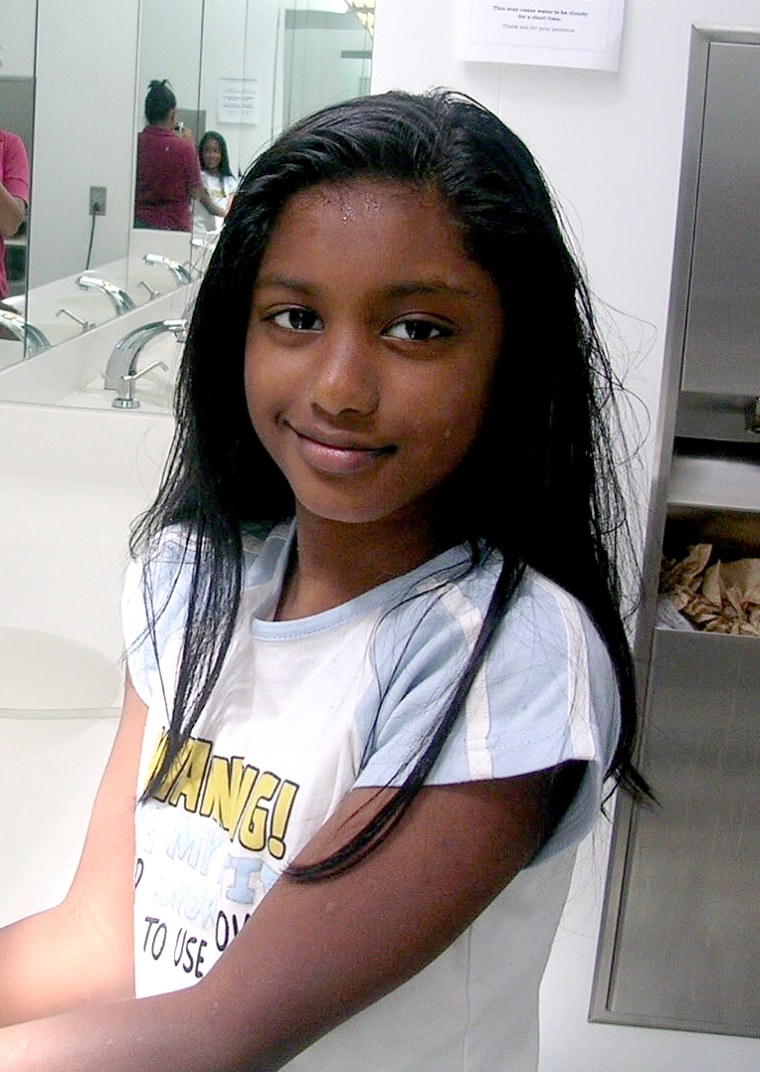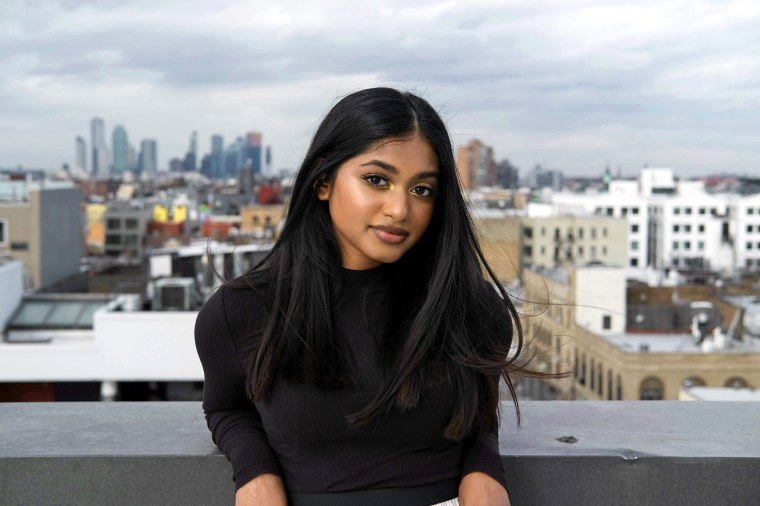Samantha Ram was just a kid the first time she felt ashamed of the color of her skin. Ram, 24, whose family is Guyanese of South Indian descent, says she grew up hearing her dark complexion brought up in a negative way. She was constantly compared to her two sisters, both of whom had lighter skin. Relatives would even call her “blackie.”
“I would even get disappointed looking in the mirror when I saw my dark skin,” she said. “I would feel so ugly and ashamed.”
Ram was born and raised in Brooklyn, and she grew up loving both Disney Channel shows and Bollywood movies. She says she saw herself represented through neither medium, though, and that otherizing influence followed her into adulthood.
“As a little girl, you grow up watching Bollywood and you idolize all these actors and think they’re all so glamorous and so cool, but none of them look like you,” she said. “A lot of the dark-skinned people in Indian cinema are backup dancers, and even the backup dancers that are dark-skinned would be in the back-back.”
With calls for non-Black people of color to educate their communities in the wake of nationwide #BlackLivesMatter protests, there has been a reckoning among young Asian Americans trying to deconstruct their own families’ anti-Blackness. As Bollywood stars and others in the spotlight grapple with being called out for the hypocrisy behind their colorism and support for Black Lives Matter, experts and the South Asian community talk about the long historical toll such anti-Blackness has taken.
Yuki Yamazaki, a half-South Indian, half-Japanese psychotherapist studying Asian Americans and colorism at Fordham University, says she has experienced colorism in her own community and that breaking down how South Asians feel about color is a key component in decreasing global anti-Blackness.
“All of our communities have been fed anti-Blackness,” Yamazaki said. “In South Asia, it’s anti-darkness. We see the same themes coming up all over. And it takes us stepping back and examining our own history.”
White-Idealization in Bollywood
Recent weeks have brought on intense backlash for Bollywood actors who have endorsed skin-whitening products. Stars like Priyanka Chopra and Sonam Kapoor have been called out on social media after posting in support of #BlackLivesMatter while having done campaigns for brands like “Fair and Lovely.”
Even Shah Rukh Khan, the proverbial “King of Bollywood,” endorses a men’s “Fair and Handsome” lightening cream. When he was questioned about it in 2016, his defense was that he doesn’t use the product himself.
Bollywood’s idealization of whiteness is not a new phenomenon, Yamazaki said. The filmmaking machine, dominated in part by a few prominent families of actors and directors, is known for mostly hiring light-skinned actors and using brown-face to portray darker-skinned characters.
“These actors and actresses are not a good reflection of the whole continent or all the people that enjoy Bollywood,” she said.
This preference for “fairness” is deeply rooted, and Bollywood may just be a symptom.
Colorism in India has persisted for centuries with two main driving forces — casteism and colonialism. According to Yamazaki, the now-illegal caste system in India has long been used to discriminate against those with darker skin. Laborers, consigned to lower castes, were often darker skinned. Those who were lighter-skinned were afforded more social mobility, and casteism became more ingrained with the arrival of white British colonizers.
“Those South Asians who happened to have light skin or Anglo features were often afforded more resources,” Yamazaki said.
Though both of these systems have been abolished, their influence still lingers in India, like in the modern standard of beauty, which still emphasizes fairness.
“A white-aesthetic is still what we’re all aspiring to be,” she said. “They now use different euphemisms. Instead of ‘whitening,’ they’re using phrases like ‘brightening’ or ‘melanin inhibiting.’”
As a young girl who once had dreams of becoming an actress, Ram was affected by this lack of representation in more ways than one.
“My thought was, I’ll probably never get a main role,” she said.

History of South Asian colorism in the U.S.
According to Yamazaki, the intersection of race and whiteness were factors for South Asians who tried to immigrate to the U.S. before the Immigration Act of 1965. Indians fighting to gain entrance argued in court that they should be considered "white" for the purposes of immigration and that their status as “high-caste Hindus” should count, too. After the Act passed, it became easier for highly educated Asians to immigrate to the U.S. Though South Asians in the U.S. now come from a wide range of regions and skin tones, “that standard is still there and it’s both a reflection of history of the socioeconomic status of one family as being associated with skin color,” Yamazaki said.
Ram says she sees how deeply rooted the colorism in her community is, even in those who are the targets of it.
“I had dark-skinned West Indian people telling me that I’m ugly, when they’re dark-skinned themselves,” she said. “That shows me that it was something they were taught.”
She grew up with a self-consciousness that she says still affects her sometimes. “Stay out of the sun,” relatives would tell her. “Wear long sleeves.”
“I used to love swimming so much, but I only stuck to swimming in my swimming classes in a center. Because God forbid I got darker,” she said. “It was definitely expressed to me that my color is bad, and it’s not acceptable or presentable."
A new fight
As the realities of colorism in Bollywood are more closely dissected by fans and experts, the actors and filmmakers in one of the biggest cultural institutions in the world are being called into question.
Celebrities in the U.S. are bringing the conversation to their young South Asian audiences.
“I know how we talk about Black people,” Hasan Minhaj said in an episode of his Netflix comedy series “Patriot Act,” “and it is f----- up. … If someone in your family is dark skinned, we clown them. Our Bollywood stars do skin-whitening commercials so we don’t look Black.”
Ram says she’s had conversations with her parents that have dismantled some of their prejudice and that she has a much better relationship with them now, but her own self-image has been more difficult to deal with at times.
“I’ve had to fight myself to really feel differently,” she said. “Even to this day, I’m really struggling with those insecurities. They’re so embedded.”

